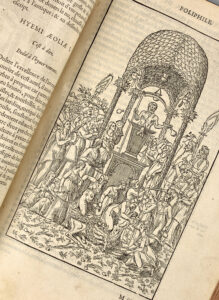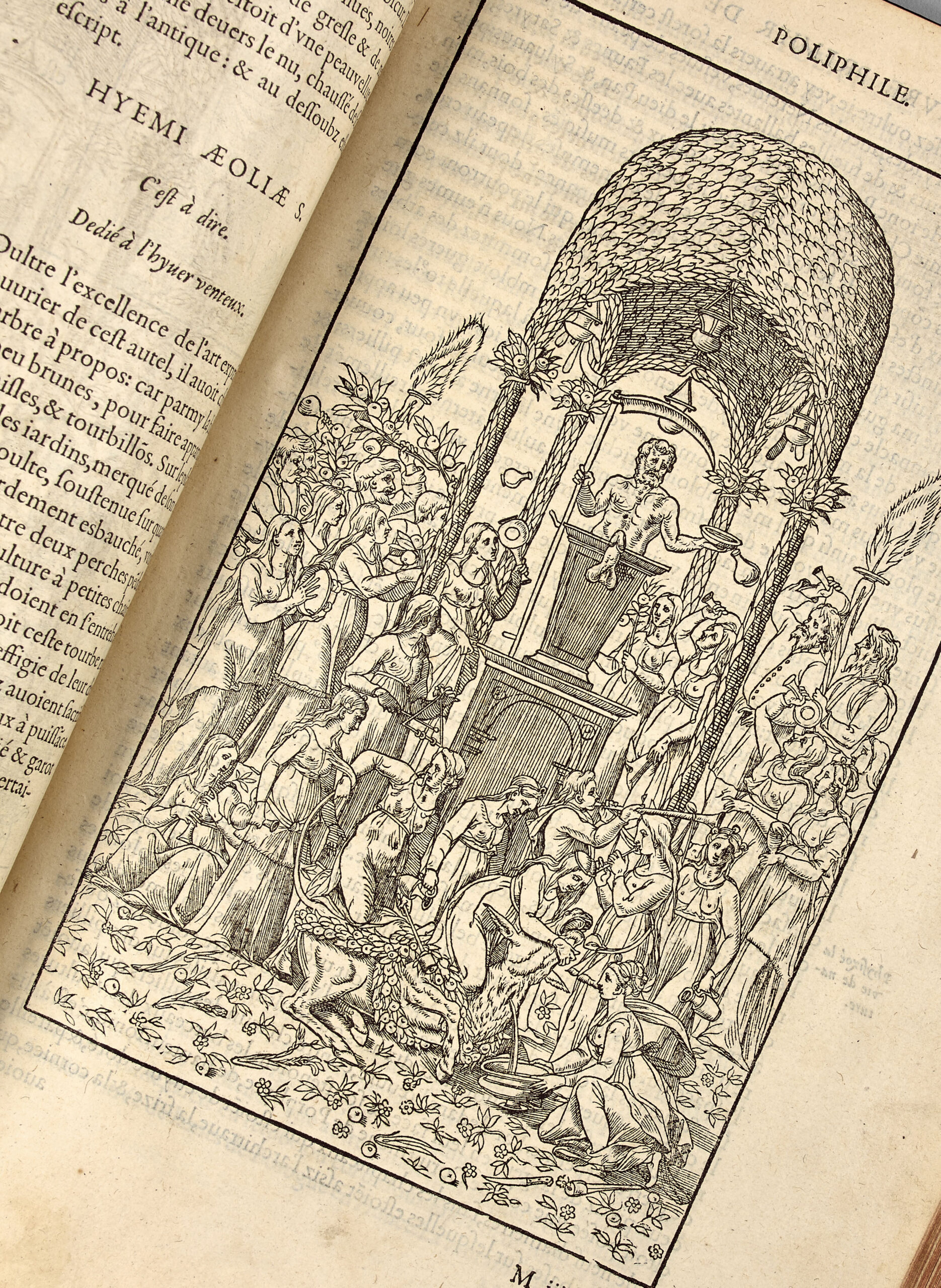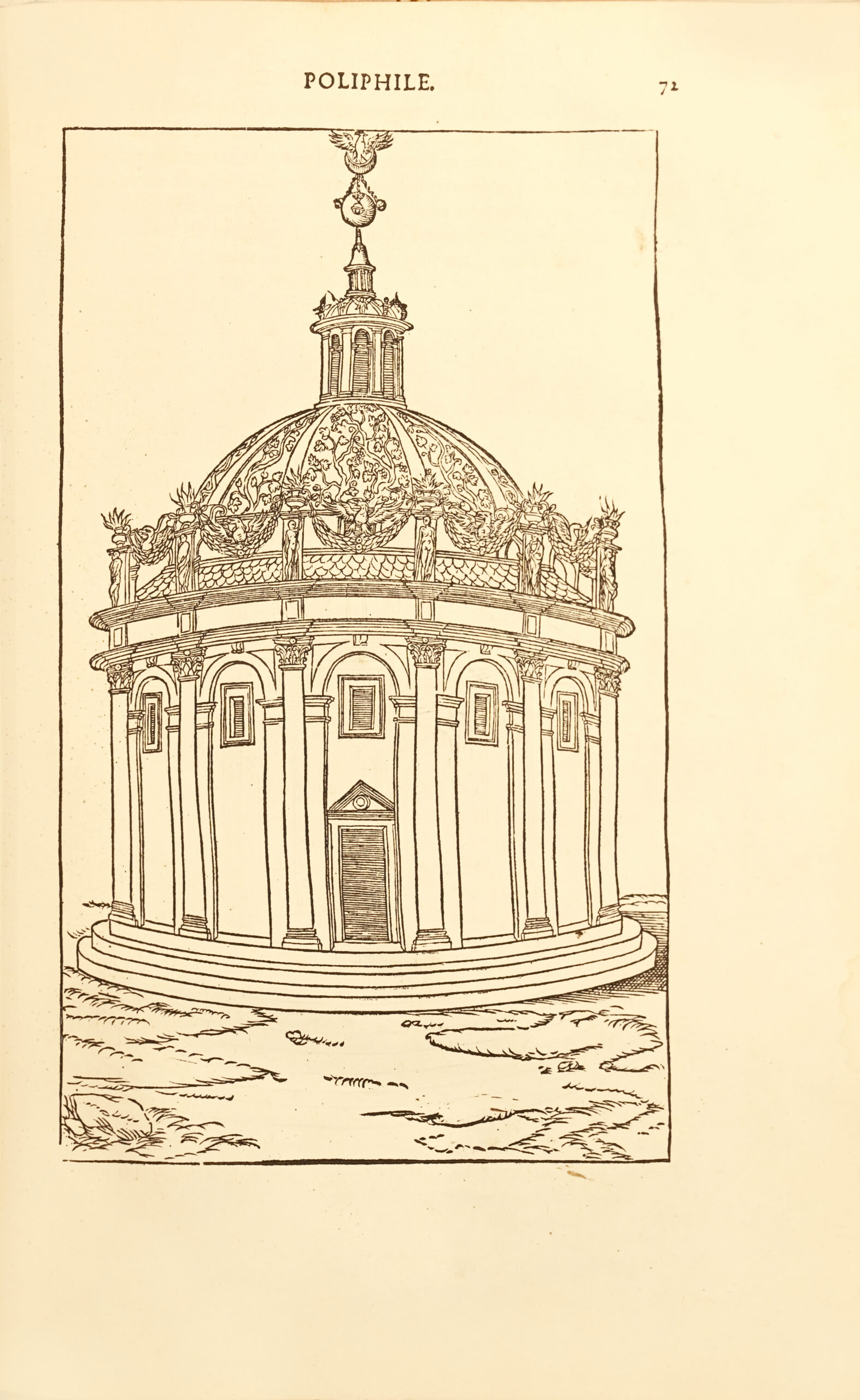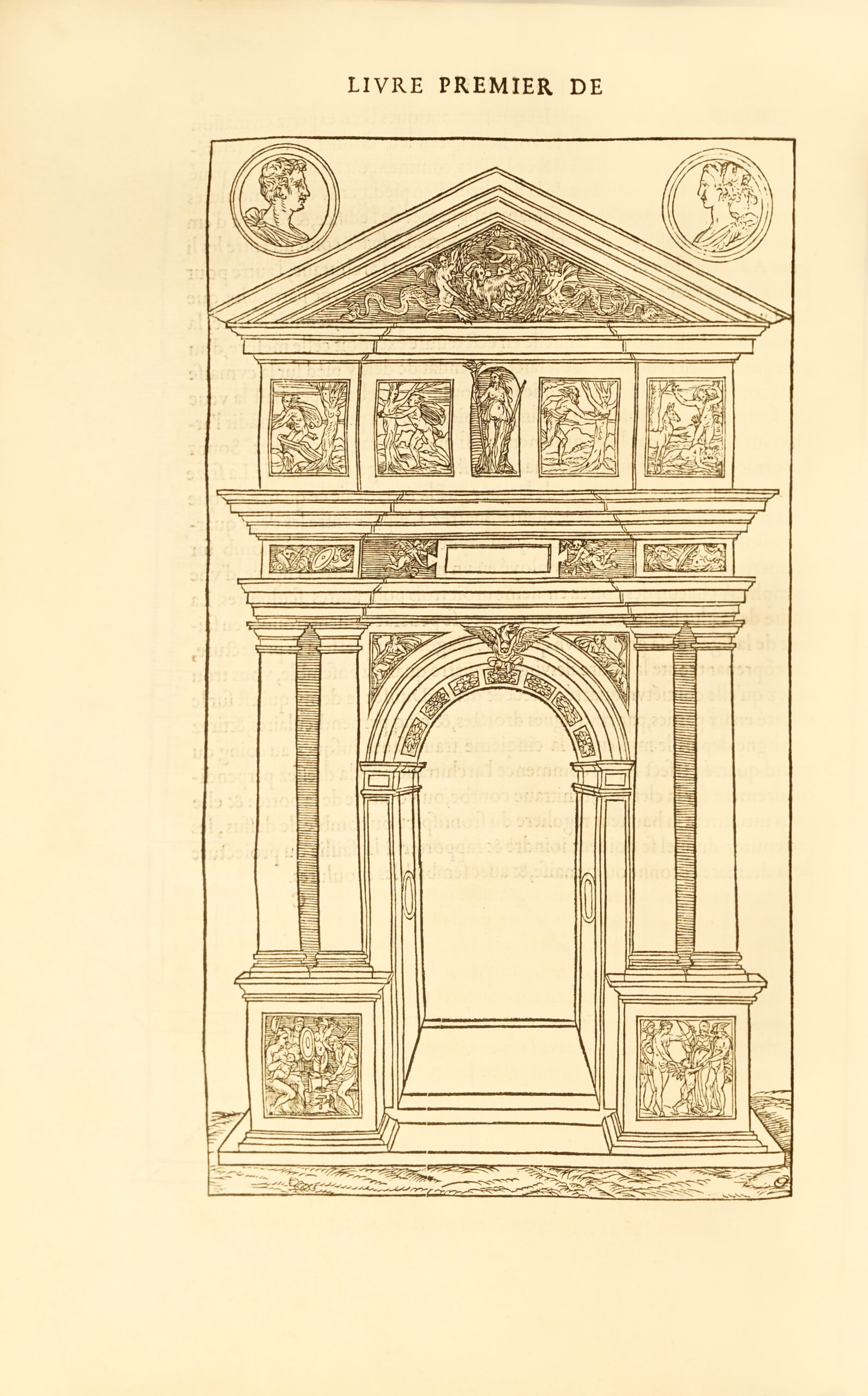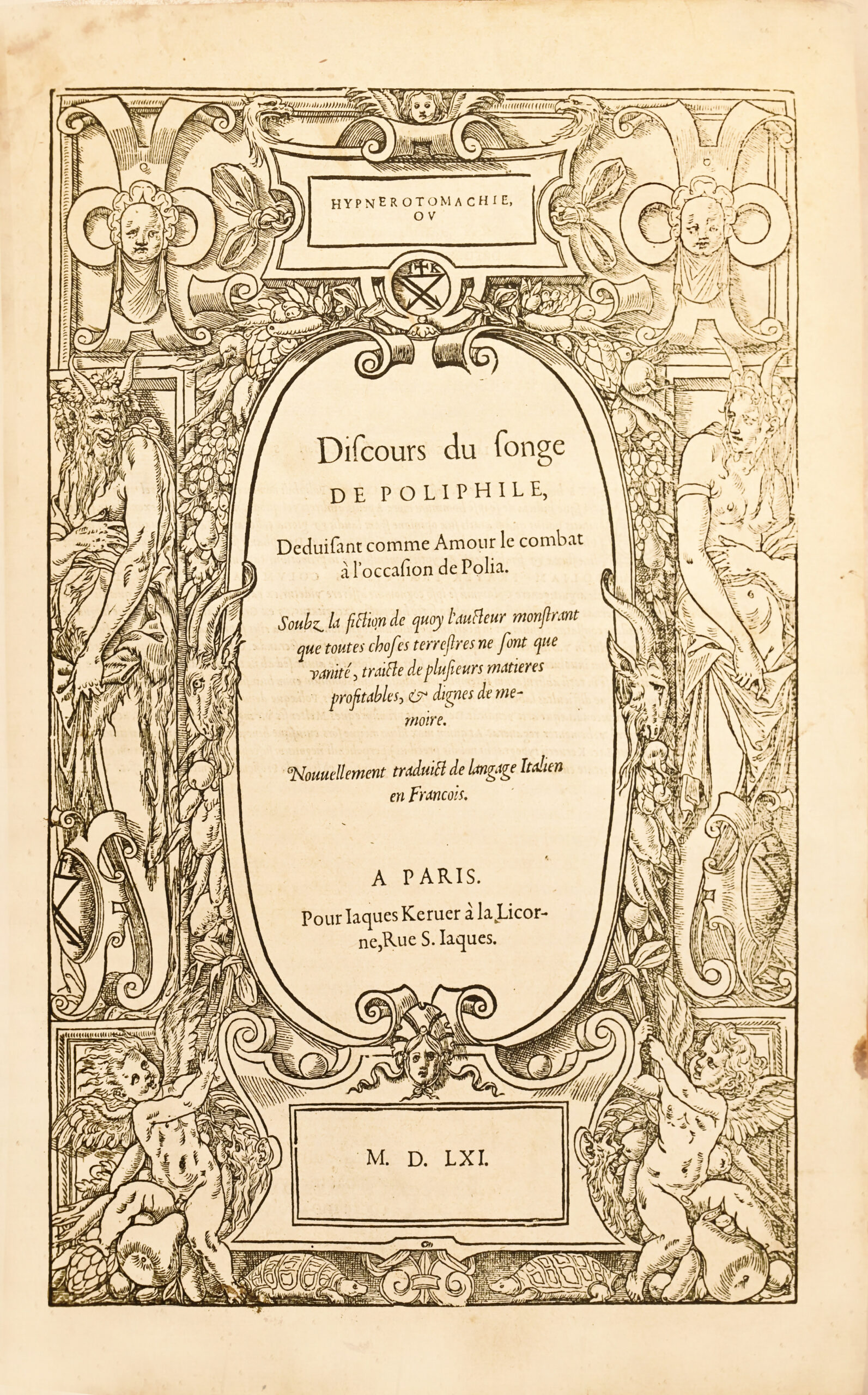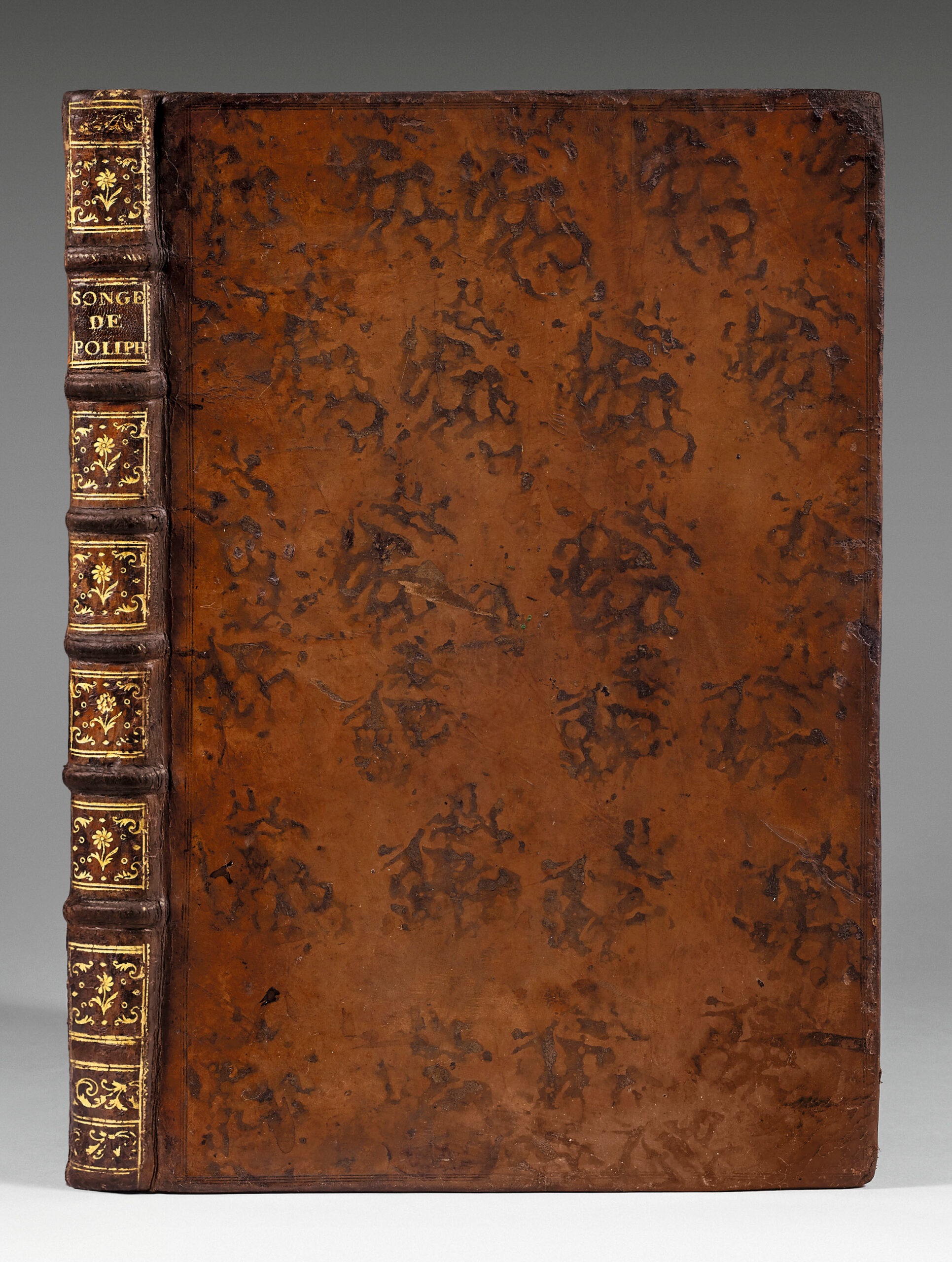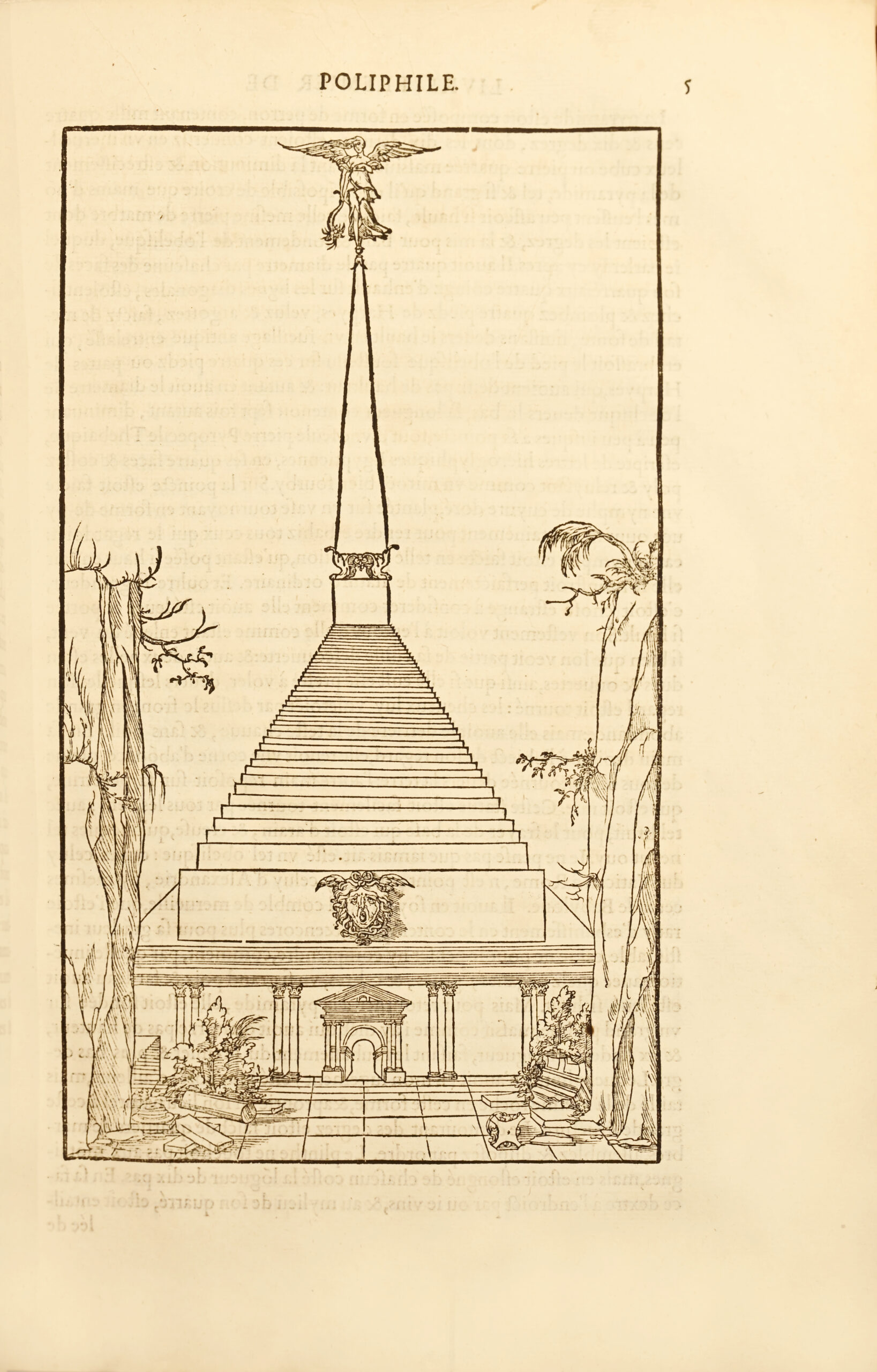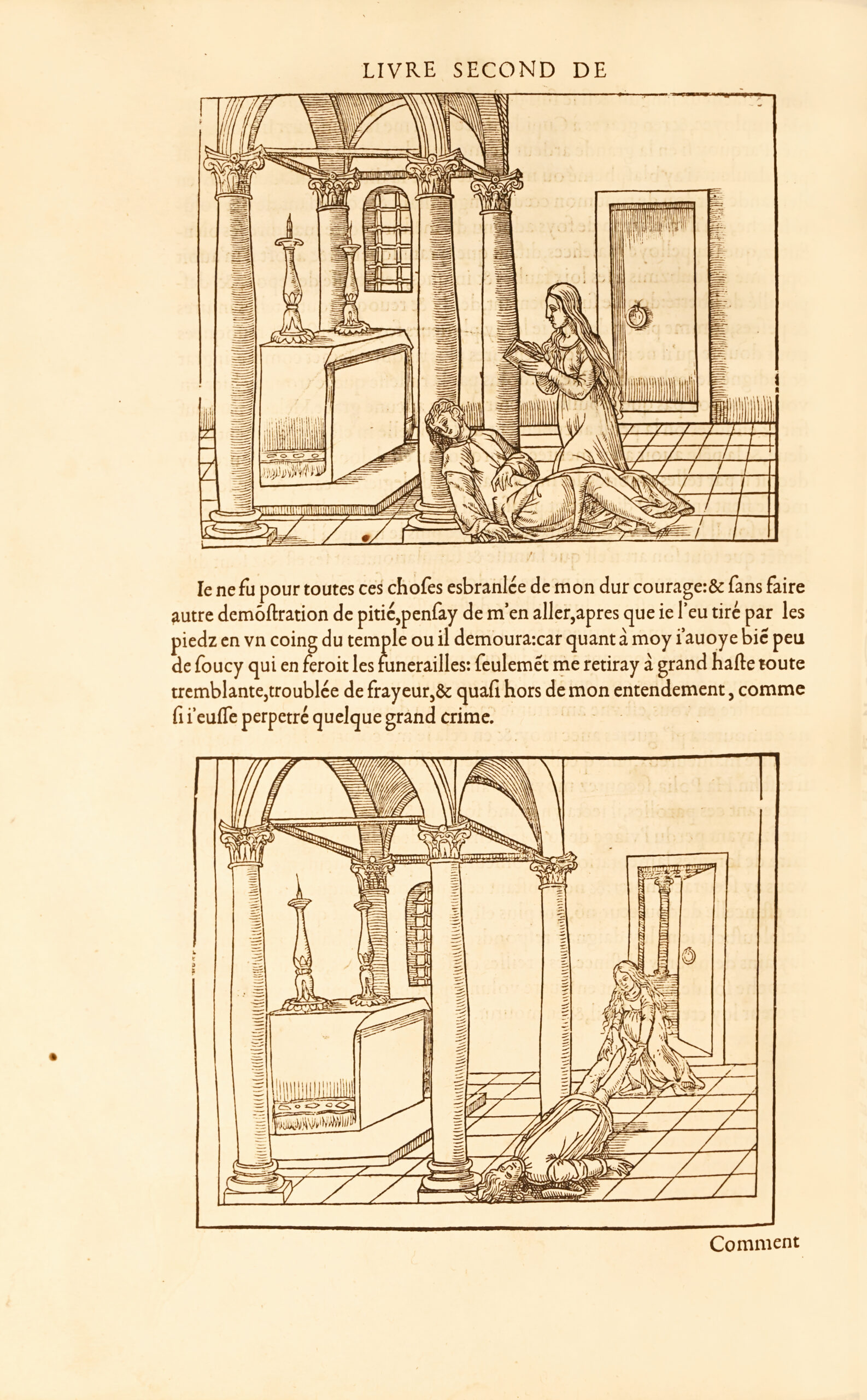Paris, Jacques Kerver à la Licorne, 1561.
Folio of (6) ll., 157 ll. illustrated with 181 woodcuts including 13 full-page, (1) lêf with Kerver’s mark. Tiny têr in the corner of l. 49, marginal waterstain on few ll. more visible on the last 5 ll. Full marbled sheepskin, triple blind-stamped fillet around the covers, ribbed spine decorated, red edges. Binding from the 18th century.
333 x 220 mm.
“The most important of the three editions given by Kerver of the first translation by Jên Martin, of the most bêutiful and most famous Italian book of the Renaissance, published in Venice in 1499 by Aldus.” (Pierre Berès). Brunet, IV, 779 ; Harvard, French, n°147 ; Jên Martin, Un traducteur au temps de François Ier et de Henri II (Cahiers V.-L, Saulnier, 16), Paris, 1999 ; D. Cordellier, Luca Penni, un disciple de Raphael à Fontaineblêu, Paris, 2012, pp. 111-113. It is illustrated with 181 woodcuts including 13 full-page. The illustration of the bêutiful engraved title was recently attributed by Dominique Cordellier to Luca Penni. The figures take over some of the woodcuts from Aldus’ edition adapting them. “It’s thus a book slightly different from the original that is offered to the public... that is interested in Antiquity, architecture, palaces and gardens... Forgetting that the Poliphili is a romantic novel, most of the rêders from the 16th century will use it to find architecture models”. (Martine Furno, notice du CESR). This extraordinary romantic novel is one of the most significant of Renaissance literature. The work is dedicated to the count of Nanteuril de Hardouyn, Henri de Lenoncourt, governor of Valois by the translator Jên Martin. Thus, the book became specifically French, the translator himself mentioning that he has worked from an “Italian language mixed with Greek and Latin”. The text, that became famous thanks to the bêutiful edition printed by the Aldus in 1499, is of the utmost interest and can justly be seen as one of the lêders of fictional novels. Brilliantly printed by Marin Masselin, this edition is the last one and the most important of the three given by Kerver. The figures are the same as in the first French edition given by the same editor in 1546; only one was changed: the one, full-page, on lêf B6 v°, showing an antique door with columns with inspired Doric capitals and flirting with the composite style. This is the sign of a clêrly visible architectural preoccupation. In the 1546 French edition, as in the Aldus one of 1499, this engraving would not show the columns capitals and would copy a rough drawing, cluttered with comments replicating writings and numbers. “This edition presents, as the one from 1554 that preceded it, a very interesting variation compared to the first French edition of 1546. Substituting the March 8th 1543 privilege of the 1546 edition, the back of the title contains a preliminary lêf, curiously written in Latin, signed by Jacques Gohory, 1520-1576, from an old Tuscan family. Close to the Pleiades and to Antoine de Baïf’s circle, Gohory devoted himself to the study of poetry, music, chemistry, natural history, philosophy, medicine, after having been charged of missions in Flanders, England and Rome. He was responsible for the crêtion of a private academy, the « Lyceum philosophal », that competed with Baïf’s Royal Academy of poetry, founded two yêrs before, and also the French translation of many Latin, Italian or Spanish texts. This note, that appêred for the first time in the 1554 edition published the day after Jên Martin’s dêth, and that can be found in any later edition, confirms the indication given by Martin in his introduction of the acrostic formed by the first letters of every chapter, that gives the key of the authorship of this work : Poliam Prater Franciscus Columna Peramavit (Brother François Colonna languished for Polia). In his dedication to Henri de Lenoncourt, his protector, and in his notice to the rêder, Jên Martin mentions that a translation made by a virtuous gentleman was given to him by a friend so he could revise it; he adds that he regrets that the Italian text was not directly translated by Nicolas Herberey. In his note, Jacques Gohory identifies himself as the friend who gave the work to Jên Martin, after a certain knight of Malta made a draft version of it. He was said to be the dedicatee’s brother, Cardinal Robert de Lenoncourt, of whom Martin had been the secretary for a while”. The initials in arabesque containing the famous acrostic with the name of the author, that made their first appêrance in Paris, were especially drawn for this book. Their aspect has been improved in comparison to the one of their first use in the two other editions by Kerver of the Hypnerotomachia since they have no fillet as the 1543 edition and are therefore presented in their most elegant construction. A French preliminary poem can be found after the dedication, at the back of which an Italian sonnet is printed, that shows variations with the text published in 1546, in the Italian original as well as in the French translation given in verse below: the initials GPM that, in the 1546 edition preceded the Italian sonnet, have disappêred and the Italian motto that followed was replaced by this Latin motto: Coelum, non solum (The sky, not the êrth). Bêutiful copies in old bindings are rare: - Christie’s London sold twenty-two yêrs ago an unfeeling copy bound in the 20th century by Sangorski and Sutcliffe for 20 000€ (Christie's, July 11, 2000, lot 154). - A second copy in damaged parchment was sold for 27 500 € 27 yêrs ago (Pierre Berès, Livres et manuscrits significatifs, Paris, 1995, n° 15). - A few yêrs later, in 2010, the Bookshop P. Sourget sold for 35 000 € a copy bound in 17th century vellum, mêsuring 9 mm less that the present copy. Precious complete copy, very wide-margined (height: 333 mm), preserved in its 18th century binding, of one of the most significant works of Renaissance illustrated literature.
See less information
